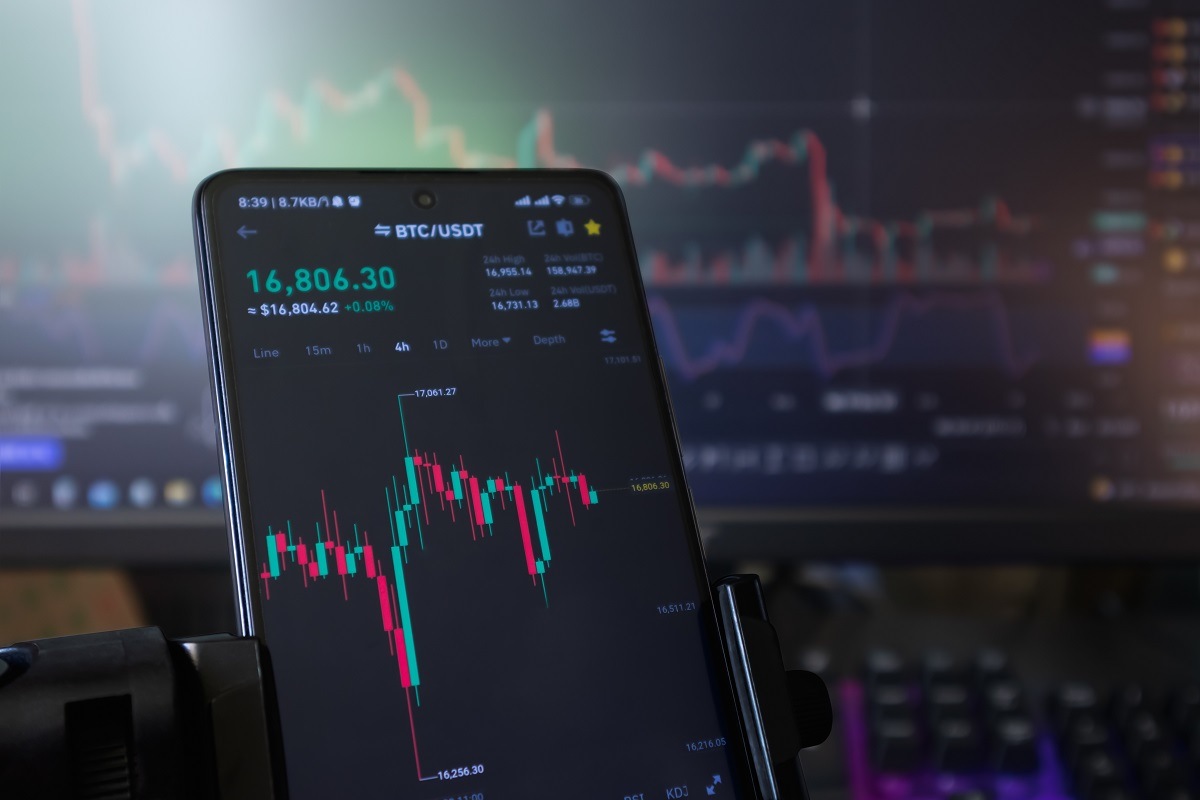NASDAQ, one of the world’s largest stock exchanges, plays a critical role in the global economy, with over 4.8 billion daily transactions. Despite being monitored by regulatory government agencies like SEC and FINRA, industry experts and professionals have consistently voiced concerns about the NASDAQ brokerage model. The platform might have been a flawless adaptation in the past. However, the reluctance to innovate and update for the current scenario makes it more of a dead weight than leverage. This article analyzes how NASDAQ’s discriminatory fallacies end up favoring institutional traders and point out feasible solutions to balance the scales.
Limitations of NASDAQ’s Brokerage Model
- Transparency Issues
NASDAQ’s exchange broker model, which involves a network of market makers and brokers that facilitate trades between buyers and sellers, has certain limitations in terms of transparency. Here are a few key limitations:
- Lack of transparency in pricing
The prices of stocks on NASDAQ are determined by a complex system of bids and offers from multiple market makers, and the specific prices offered by each market maker are not publicly disclosed. This lack of transparency can make it difficult for investors to know whether they are getting the best possible price for a particular stock.
- Limited Visibility into Order Flow
NASDAQ’s market maker model means that orders are filled by a network of brokers, rather than through a centralized order book. This can make it difficult for investors to get a clear picture of the order flow and the volume of buying and selling activity in a particular stock.
- Potential for Conflicts of Interest
Because market makers on NASDAQ are also brokers, there is a potential for conflicts of interest to arise. For example, a market maker might prioritize its own trading interests over those of its clients, or might engage in practices that are designed to manipulate the market.
- Cloud Denial: Aversion to Brokerage as a Service
The NASDAQ brokerage model lacks Quick Sign-up and BaaS features due to a lack of cloud-based solutions. Brokers can only offer services if they can host and manage their servers and complex technology platforms. Thus, the NASDAQ solution has become a niche open to only those with adequate financial and technical backing.
- Financial Exclusion
NASDAQ’s broker platform is not open to all. The eligibility criteria for becoming a broker supports institutional traders with high asset value. Beyond registration, the NASDAQ platform also has a high membership fee, ranging anywhere between $5000 to $500,000. This practice limits newcomers and pushes NASDAQ into obsolete ways, lacking creative and out-of-the-box ideas.
- Time Constraints
It takes at least six months to become a broker with NASDAQ following several complicated broker registration steps. Given the technology at their disposal, half a year sounds more like a red-tape-riddled platform rather than a process. Participants also cannot exit working under institutional traders to set up an independent brokerage enterprise.
- Absence of AI Insights and Algo Trading
AI-powered insights can outperform the markets and are relied upon by institutional traders. Its success lies in its lack of human emotion and bias. Unfortunately, the majority of investors lose wealth due to errors in judgment. Non-institutional traders lack access to AI technology found on modern exchanges. Algo trading is becoming increasingly relevant, providing speed, customization, and objectivity advantages for traders. Traders can take advantage of market movements at any time with algo trading’s 24×7 capabilities.
Also Read: PayBito Becomes the First Crypto Exchange to Integrate ChatGPT in its Trading Platform
Market Manipulation Strategies
With easy access to huge financial resources, institutional investors are much more capable of swaying and manipulating the markets in tune with their interests. The various tactics used to influence the market and optimize profits include
- Spreads: This refers to buying securities at a lower price and selling them at a higher price. They may manipulate the spread to increase their profit margin.
- Stale Prices: This involves using outdated prices for securities. This practice can result in losses for investors who are not aware of the true market value of the security.
- Quote Stuffing: Market makers may flood the market with orders to create the illusion of high demand for a particular security. This can attract other investors to buy the security, and the market maker can then sell their shares at a higher price.
- Spoofing: Spoofing refers to the act of placing large orders for security and then canceling them before they are executed. This can create the illusion of high demand for the security, which can again lead to other investors buying it.
- Price Targeting: This involves setting specific prices for securities to manipulate their value. This practice can lead to artificial price changes, which can ultimately harm investors who are not aware of the manipulation.
Real-Life Examples
The financial industry has been plagued by instances of institutional brokers engaging in fraudulent activities, including insider trading and market manipulation. The involvement of big names like Carlyle Group, Goldman Sachs, and Wells Fargo in fraudulent activities highlights the pervasive nature of these practices in the industry. However, they are not the only ones. The fact that these institutions have been involved in repeated scandals calls into question NASDAQ’s brokerage model.
- Carlyle Group
The Carlyle Group has been embroiled in several controversies over the years. These include links to the Bin Laden family, conflict of interest allegations, investment in defense contractors, allegations of profiting from crises, and environmental controversies. One of the most significant allegations was that the company profited from the financial crisis of 2008 by buying distressed assets at a discount and then selling them for a profit, an accusation Carlyle denies.
- Goldman Sachs
Goldman Sachs has been involved in multiple market manipulation scandals over the years. One such instance was the creation of a collateralized debt obligation (CDO) called Abacus 2007-AC1, which was designed to fail, resulting in a profit for the firm. Goldman Sachs did not disclose the involvement of hedge fund manager John Paulson, who wanted to bet against the housing market.
Other instances include the LIBOR case and the famous LME aluminum price manipulation, where the firm was accused of hoarding aluminum to artificially inflate the price. These practices contributed to market instability and harmed investors. Goldman Sachs paid a $550 million settlement to the SEC for the Abacus 2007-AC1 case and ultimately sold its aluminum warehousing business.
- Wells Fargo
Wells Fargo Securities and NASDAQ have been involved in several controversies, raising concerns about unethical practices and conflicts of interest within the financial industry. One such controversy involved the artificial inflation of Facebook’s IPO share prices in 2012, which led to significant losses for investors. Both firms paid significant fines for their role in the controversy. In another instance, they were accused of insider trading related to the acquisition of Heinz by Berkshire Hathaway and 3G Capital.
Impact on Non-Institutional Investors
By artificially inflating stock prices through preferential treatment or insider trading, institutional traders can cause a surge in demand for the stock, leading to higher prices. When the truth is revealed, the stock price may crash, resulting in significant losses for non-institutional investors who may have bought the stock at inflated prices.
Non-institutional brokers, who do not have the same level of access to information and resources as institutional traders, remain at a disadvantage when competing in a manipulated market. They may face significant losses if they are not aware of the manipulations taking place, and their clients may also suffer. In addition, market manipulation can erode trust in the financial markets and make it harder for non-institutional brokers to attract and retain clients.
The Hypocrisy of NASDAQ
NASDAQ’s policies on unethical practices apply only to market makers, and those institutional traders go with just the fine. Enlisted firms participating in unethical and illicit activities are immune to these rules. The platform suggested that companies should have a diverse board to be listed on their platform. Offering women a job just because the company can avoid penalties is far from women’s empowerment. While NASDAQ promotes diversity in the companies’ boards, it does not present the same opportunities to intermediaries, especially those planning to venture and carve an independent business based on brokerage.
The Need For Evolution Through Innovation
It is more or less accepted that NASDAQ’s exchange broker model is backdated and obsolete, impeding financial inclusion and presenting a biased advantage. The need to foster fairness and transparency is essential for instilling trust and empowerment. The solutions are viable, especially for the world’s 2nd largest exchange. The potential areas of improvement include:
- Adopt Cloud-based Brokerage as a Service (BaaS)
The rise of BaaS heralds a new era of transformation in exchange brokerage, utilizing AI and cloud integration. Embracing BaaS results in apparent advantages like enhanced affordability, user-friendliness, and an uncomplicated registration process. Ultimately, BaaS enables brokerage services to access newer markets and demographics. Cloud-integrated brokerage platforms are also instant and cost-effective. For example, PayBito’s platform allows users to sign up within three minutes for a nominal fee of $49.99 per month.
- Expedite Brokerage Democratization
Ensuring transparency and equal opportunity in brokerage can avert market turmoil. Offering all investors access to real-time market data and AI-based insights curbs insider trading, while fostering competition reduces manipulation, and improves supervision.
- Promote Financial Inclusion
Facilitating financial inclusion and offering adaptable brokerage services are pivotal for 21st-century exchanges. To promote accessibility, it is vital to eradicate high costs and technical challenges such as coding, installation, and server hosting. The latest cloud-based platforms can advance financial inclusion, empowering brokers to thrive in the digital era.
- Make AI-Powered Trading Tools Accessible
Broker platforms can empower traders with AI-enabled tools. PayBito, for example, employs a neural network-powered Data Engine that evaluates trade data and generates rankings. It collects news from multiple sources, conducts impact analysis, and sends trading signals to retail traders. The Data Engine learns from market conditions and experienced traders and makes gradual improvements.
- Empower Traders with Algo Trading and Other Features
Trading bots with customizable algorithms enable algorithmic trading for buyers and sellers in modern exchange broker models. The PayBito platform offers bot setup in only 2 minutes without requiring any downloads and even allows trial-testing before investment. Moreover, there are additional features, such as multiple trading options, a strong order management system, and powerful matching engines to facilitate high-volume transactions.
Conclusion
To create a more equitable financial market, it is necessary to offer affordable and advanced trading tools to retail traders. Brokerages can democratize trading services to empower these traders to compete with institutional investors, who have monopolized the market for too long. By reducing the impact of institutional investors’ unethical practices, brokerage firms can make the market fairer and provide equal opportunities for all investors to thrive.





